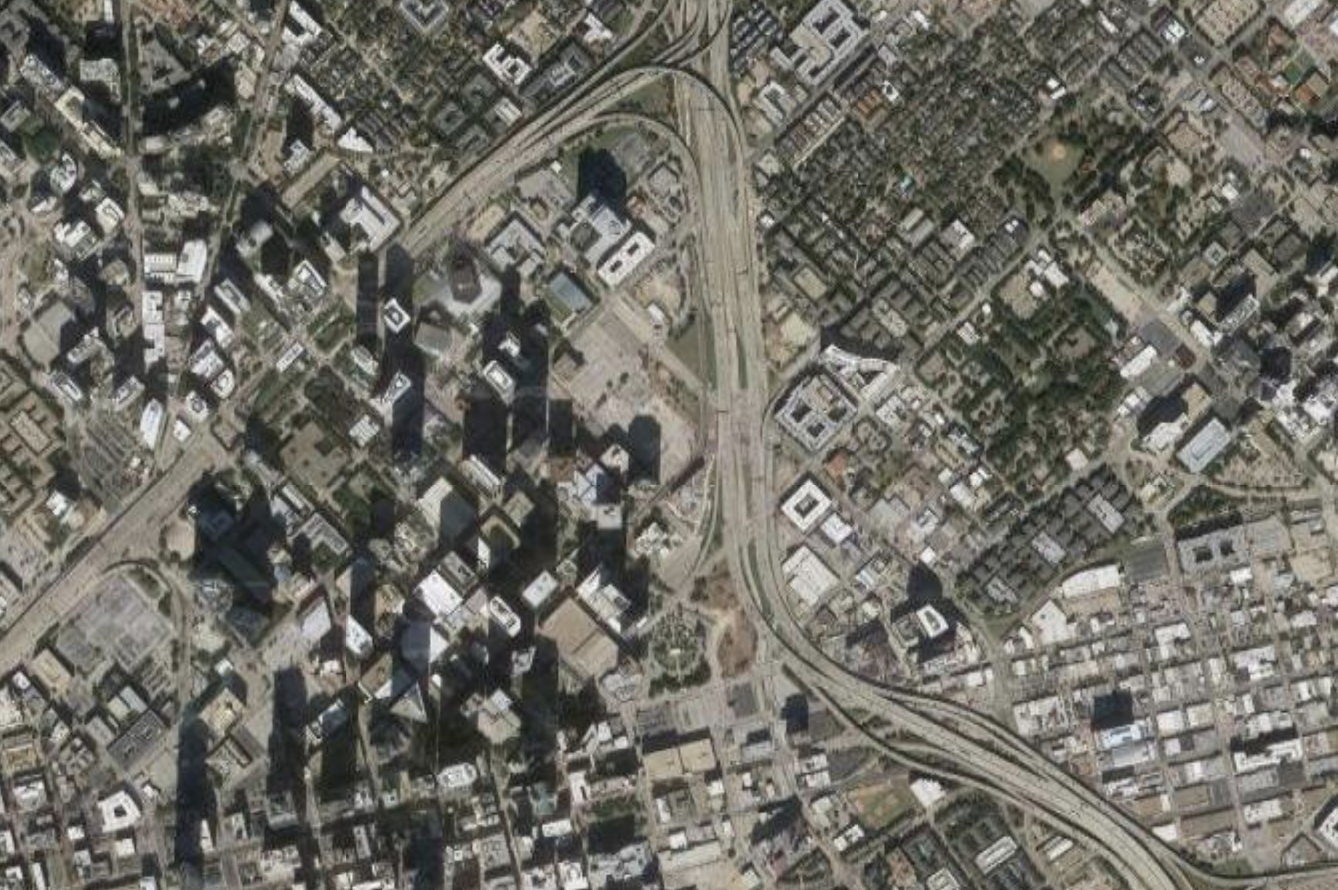Last month, the Texas Department of Transportation unveiled initial designs for replacing or removing I-345. TxDOT included five possible options for the future of the road that cuts through Deep Ellum and which, as we have argued for a number of years, should ultimately be torn down. They include:
- Doing nothing
- Rebuilding the existing road
- Replacing I-345 with a trenched highway
- Removing the highway altogether
- A “hybrid” option that includes some removal and some trenching
Last Thursday, the Coalition for a New Dallas hosted a conversation with renowned urban planner Peter Park to discuss the options. (Full Disclosure: The Coalition was founded by D Magazine’s late founder Wick Allison.) Park’s takeaway: the designs aren’t there yet. In fact, Park even found TxDOT’s design for I-345’s removal to be lacking and said that none of the early plans for the future of I-345 fully maximized the full potential of what a reimagined I-345 could mean for Dallas.
“I think you can do better,” Park told moderator Patrick Kennedy, who started this whole I-345 teardown business. “I know that these are different alternatives. I’m not sure that as configured the removal alternative or the hybrid alternative are really optimized in a way that balances the throughput need with the opportunity that a removable or a hybrid provides to enhancing the local street network,” he said.
Translation: TxDOT’s designs don’t adequately re-stitch the street network or create enough new developable land that can be recaptured by the city and transformed into a vibrant and equitable inner-city neighborhood. Park pointed out confusing aspects of TxDOT’s designs, including a removal option that creates strangely shaped new parcels of land and needless dead ends. The other designs introduce frontage roads that continue to disrupt the street grid and don’t create enough new space for new neighborhood development.
Park knows what he’s talking about. A Loeb Fellow at Harvard’s Graduate School of Design and former planning director for the cities of Denver and Milwaukee, Park helped lead the latter’s effort to tear out its own urban highway, one of the pioneering examples of highway removal in the country. What has made that project a success, he said, was that the city and county didn’t simply remove the road, they carefully planned for how land freed up by the removal would be managed after the transportation project was complete. This included recapturing land and selling it to developers with strategic restrictions in place around how it would be used.
That, after all, is the core of what makes I-345 such a potentially transformative project for Dallas. TxDOT is a transportation agency, but the removal isn’t merely a transportation project. The city has to get the redevelopment portion of the project right in order for it to deliver on the promise of helping to catalyze the regrowth of Dallas’ city center as a major job center and vibrant urban neighborhood. But that is only possible if TxDOT’s transportation designs deliver a workable street grid and developable land parcels.
The good news is that the political process around I-345 is still in its relative early stages. Park said it is incumbent upon the city and its elected officials to make sure that TxDOT’s designs meet the public’s expectations for the project. After all, the job of TxDOT engineers is to design what they believe is a workable transportation facility for that gap between two urban highways. It’s the city’s job to make sure those designs also maximize the benefit for the broader community.
That’s why Park told Kennedy last week that the initial community outreach and public forums that were conducted by TxDOT, as well as groups like the Coalition, must continue to inform the process as it moves forward.
“One of the things that your work has done very, very well is laid out the topics that the community as a whole should be asking about and coalescing and setting expectations,” Park said. “Whatever solution is chosen, it is clear how that chosen solution, that preferred alternative is delivering on what the community said it wanted and is maximizing the opportunities for the local community.”





